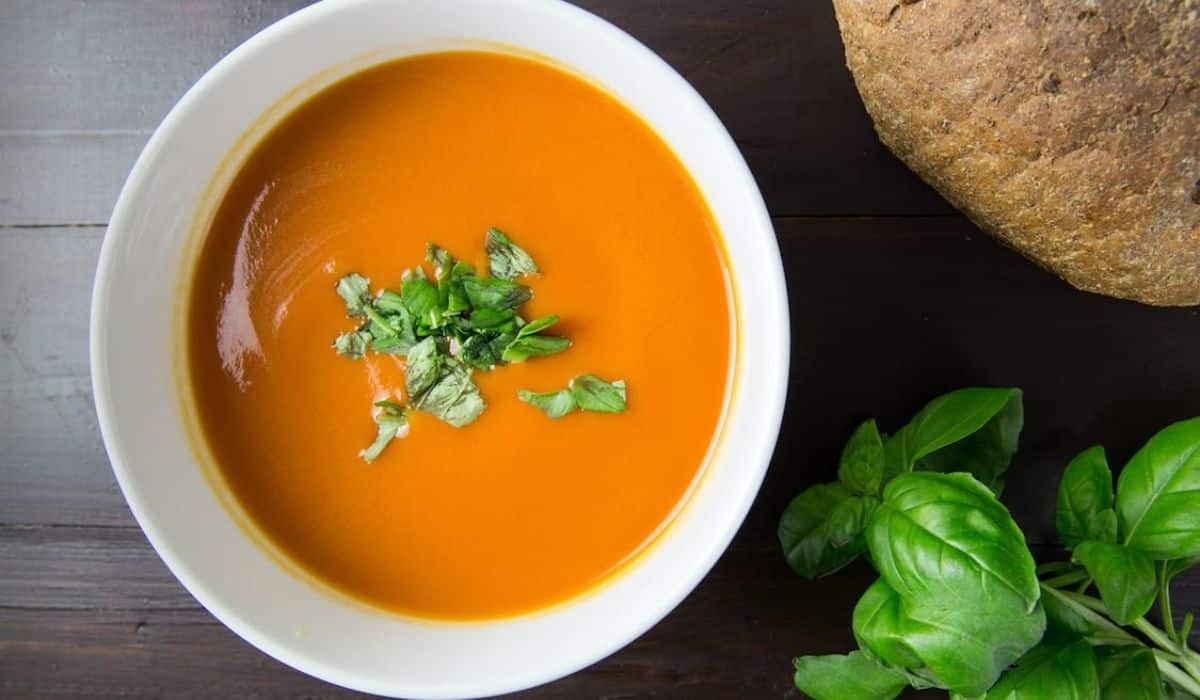Quick & Flavorful Homemade Vegetable Stock Recipe from Scratch
Crafting a delectable homemade vegetable stock can transform ordinary dishes into culinary masterpieces.
Kitchens come alive with rich, aromatic flavors when simmering fresh produce.
Seasonal vegetables provide deep, nuanced layers of taste that commercial versions simply cannot match.
Small chopping techniques and careful ingredient selection become your secret weapon for incredible depth.
Professional chefs understand that quality stock forms the foundation of exceptional cooking.
These liquid gold reserves pack incredible nutrition and intense flavor profiles.
Let you create something magical that will elevate every recipe in your cooking arsenal.
Why Homemade Veggie Stock Is Liquid Gold
What You’ll Need For Flavorful Veggie Stock
Base Vegetables:Herbs and Seasonings:Additional Flavor Enhancers:How To Make Vegetable Stock That’s Packed With Depth
Step 1: Preparing Colorful Vegetable Medley
Chop your vibrant vegetables into roughly equal chunks. You’ll want to include:Aim for similar sizes to ensure balanced flavor distribution throughout the stock.
Step 2: Heating the Cooking Vessel
Warm olive oil in a large stockpot over medium heat. Watch for a gentle shimmer that signals the perfect cooking temperature.
Step 3: Sautéing Vegetable Base
Toss the chopped vegetables into the pot. Stir them occasionally, allowing them to dance and caramelize for 5-7 minutes. This creates a deep, rich foundation for your stock.
Step 4: Introducing Aromatic Herbs
Sprinkle in your flavor enhancers:These ingredients will transform your simple vegetables into a complex flavor profile.
Step 5: Deglazing with Wine
Pour white wine into the pot, scraping up those delicious browned bits clinging to the bottom. This technique adds depth and complexity to your stock.
Step 6: Adding Umami Boost
Gently place kombu seaweed into the vegetable mixture. This secret ingredient will elevate the stock’s flavor to new heights.
Step 7: Filling with Liquid
Pour water into the pot, completely submerging the vegetables. The liquid should cover everything generously.
Step 8: Bringing to a Gentle Simmer
Heat the mixture until it reaches a soft, barely bubbling simmer. Avoid rapid boiling, which can make your stock cloudy and muddy.
Step 9: Slow Cooking Flavor Magic
Reduce heat to low and let the stock simmer uncovered for 45-60 minutes. This slow process allows flavors to mingle and intensify.
Step 10: Cooling Down
Remove the pot from heat and let it rest for 10-15 minutes. This allows the flavors to settle and the temperature to drop slightly.
Step 11: Straining Liquid Gold
Strain the stock through a fine-mesh sieve. Gently press the vegetables to extract every last drop of flavor.
Step 12: Storing Your Liquid Treasure
Cool the stock completely before transferring to airtight containers. It will keep in the refrigerator for 5 days or can be frozen for future culinary adventures.
Tips For Bold And Balanced Homemade Stock
Easy Ways To Mix Up Vegetable Stock Flavor
What Recipes Shine With Veggie Stock
How To Store Homemade Vegetable Stock Perfectly
FAQs For Homemade Vegetable Stock Enthusiasts
Yes, you can customize the stock with seasonal or available vegetables like parsnips, fennel, or mushrooms. Avoid starchy vegetables like potatoes that can make the stock cloudy.
No, kombu is optional but adds a rich umami flavor. If you don’t have it, simply skip this ingredient without affecting the overall stock quality.
Use a dry white wine like sauvignon blanc or pinot grigio. Avoid sweet wines as they can alter the stock’s savory profile. If you prefer, you can also substitute with water.
Roast the vegetables before simmering to develop deeper caramelized notes.
Print
Homemade Vegetable Stock Recipe
- Total Time: 1 hour 5 minutes to 1 hour 25 minutes
- Yield: 4 1x
Description
Crafting this homemade vegetable stock brings garden-fresh flavors to your kitchen, elevating soups and sauces with pure, natural goodness. Rich with aromatic herbs and seasonal vegetables, you’ll discover a versatile base that adds depth and nourishment to countless culinary creations.
Ingredients
Main Ingredients:
- 2 large onions
- 3 carrots
- 2 celery stalks
- 1 leek
- 4 garlic cloves
Aromatic Herbs and Seasonings:
- 2 bay leaves
- 4 sprigs fresh thyme
- 4 sprigs fresh parsley
- 1 teaspoon whole black peppercorns
- 1 teaspoon salt
Additional Ingredients:
- 2 tablespoons olive oil
- 10 cups water (2.4 liters)
- 1/2 cup white wine (optional)
- 1 piece kombu seaweed (optional)
Instructions
- Roughly chop onions, carrots, celery, leek, and garlic, ensuring chunks are similar in size for even flavor distribution.
- Heat olive oil in a large stockpot over medium heat, allowing it to shimmer but not smoke.
- Sauté chopped vegetables for 5-7 minutes, stirring occasionally to prevent burning and develop a rich, caramelized base.
- Add bay leaves, thyme, parsley sprigs, whole peppercorns, and salt to the pot, releasing their aromatic essences.
- Pour white wine (if using) to deglaze the pot, scraping up any flavorful browned bits from the bottom.
- Gently place kombu seaweed (if using) into the vegetable mixture to enhance umami depth.
- Fill the pot with water, ensuring vegetables are completely submerged.
- Bring the liquid to a gentle simmer, avoiding rapid boiling which can make the stock cloudy.
- Reduce heat to low and let the stock simmer uncovered for 45-60 minutes, allowing flavors to meld and concentrate.
- Remove from heat and let the stock cool slightly for 10-15 minutes.
- Strain the stock through a fine-mesh sieve, pressing vegetables gently to extract maximum flavor.
- Cool completely before storing in airtight containers in the refrigerator for up to 5 days or freeze for future use.
Notes
- Adjust vegetable quantities flexibly based on seasonal availability or what’s in your kitchen.
- Roast vegetables beforehand for deeper, more caramelized flavor profile before simmering.
- Skip wine for alcohol-free version, replacing with additional splash of water or light vinegar.
- Consider adding mushroom stems or parmesan rind for extra umami complexity when stock simmering.
- Prep Time: 10 minutes
- Cook Time: 55-75 minutes
- Category: Snacks, Dinner
- Method: Simmering
- Cuisine: American
Nutrition
- Serving Size: 4
- Calories: 50
- Sugar: 2 g
- Sodium: 500 mg
- Fat: 5 g
- Saturated Fat: 1 g
- Unsaturated Fat: 4 g
- Trans Fat: 0 g
- Carbohydrates: 8 g
- Fiber: 1 g
- Protein: 1 g
- Cholesterol: 0 mg




Truc Tran (Kris)
Senior Food Editor
Expertise
Home Cooking, Meal Planning, Recipe Development, Baking and Pastry, Food Editor, Cooking-video Maker, Vietnamese Food Evaluation Expert
Education
Truc Tran (Kris), an experienced food writer and editor, is great at exploring and describing global cuisines, from simple street food to fancy dining. In her writing, she skillfully mixes different flavors, cooking methods, and culinary traditions, showing the unique character of various cultures through their food and drinks. On azcuisines.com, Kris highlights her knowledge, especially in Asian cuisine and worldwide traditional dishes.